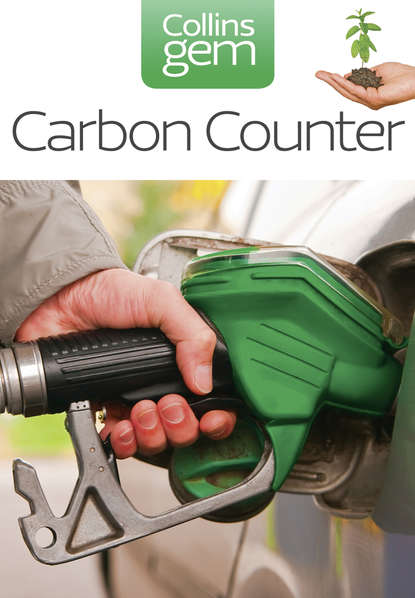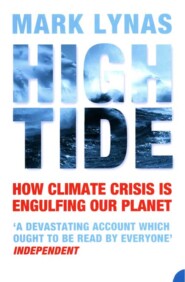По всем вопросам обращайтесь на: info@litportal.ru
(©) 2003-2024.
✖
Carbon Counter
Настройки чтения
Размер шрифта
Высота строк
Поля
GLOBAL WARMING TODAY
There is no longer any serious scientific doubt that global warming is already under way. The earth is now 0.7°C warmer than it was 150 years ago, before the Industrial Revolution began to change the amount of greenhouse gases in the atmosphere. The graph on page 16 shows how air temperatures have risen since 1850. You can see that the rise has not been uniform, but has come in two distinct blips – between 1910 and 1940, and between 1970 and today. This begs the question of why temperatures stabilized, and even cooled slightly, after the Second World War, when emissions of carbon were rising rapidly. Scientists think that the culprit may have been another pollutant, sulphur dioxide, which acts to counteract warming by reflecting some of the sun’s heat. Thus ‘global dimming’ counteracted ‘global warming’, and the two forms of pollution to a certain extent cancelled each other out. Sulphur dioxide is now produced less, however, because it causes acid rain and has nasty effects on people’s health.
GLOBAL AIR TEMPERATURE 2005 ANOMALY +0.48°C (MEAN 1961–1990)
Tip: Sulphur dioxide was one of the main pollutants in the choking London ‘pea souper’ smogs of the 1950s, which were controlled by the Clean Air Act of 1956. It was produced as a by-product of burning fossil fuels (especially coal), because of small amounts of sulphur contaminating the fuel. Low-sulphur diesel is manufactured specially to reduce sulphur dioxide emissions.
FIVE HOTTEST YEARS IN DESCENDING ORDER
Global warming impacts so far
Sea levels are rising at about 3mm per year, faster than during the whole of the last one hundred years. People in Pacific island nations like Tuvalu are already planning to leave their homelands, while cities like New York and London are threatened by rising tides.
Mountain glaciers are retreating worldwide, from the Alps to the Andes. The Alps have lost half their glacier cover since 1850. In the Andes, the melting glaciers mean that essential freshwater supplies will soon be lost for ever.
Snow cover in northern areas is decreasing, and permafrost in the Arctic is melting, causing damage to buildings and roads in Alaska and Siberia.
The melting icecap on the Arctic Ocean is affecting animals that depend on it. Polar bears have been left without ice to rest on, and some have drowned while trying to swim long distances. Walruses have tried to climb into white fishing boats, mistaking them for the ice floes that have disappeared.
Both Greenland and Antarctica are losing ice mass; Greenland now loses 250 cubic kilometres of water each year, adding to sea level rise.
Major floating ice shelves have collapsed in Antarctica. The latest was Larsen B, which fell apart spectacularly in a few days in 2002, much to the shock of watching scientists.
Droughts have increased around the world, as has the incidence of heavy rainfall, due to the speeding up of the water cycle with more energy in the atmosphere. In Mumbai, during the 2005 monsoon, nearly a metre of rain fell in a single 24-hour period (the highest total ever), killing 750 people with the resulting floods.
Hurricanes and typhoons are getting stronger, with heavier rainfall and more destructive winds. Hurricane Katrina, which devastated New Orleans,
Tip: Hurricanes get their energy from the heat of the oceans, which evaporate their water into the swirling clouds that make up these terrifying storms. So as the oceans get hotter because of global warming, hurricanes have more ‘rocket fuel’ to boost their power.
was one of the strongest Atlantic storms ever observed. Half a million people have still not returned to the ruined city, and are considered ‘climate refugees’ by some scientists.
Heatwaves have also increased in frequency and intensity. In 2003, severe heat killed up to 30,000 people across Europe. In Paris, morgues were over-flowing with the corpses of elderly people, and some had to be stored in vegetable cooling warehouses.
GLOBAL WARMING OVER THE NEXT 100 YEARS
How severe global warming gets depends mostly on how far humanity lets greenhouse gases continue to spiral upwards – and that’s where this book comes in. The Intergovernmental Panel on Climate Change, the main scientific body on this issue, states that temperatures will increase by 1.4°C to 5.8°C over the next hundred years. The key uncertainty here is not how the atmosphere will behave, but how humans will behave. Will seven or more billion humans continue to seek fossil fuel-hungry lifestyles, with cars, aeroplanes and all the rest? Or will they develop cleaner energy sources and tread more lightly on the planet? There is no clear answer to this yet – indeed the ultimate answer will depend on decisions made by each and every one of us, including you.
Here’s what – if they happen – each of these degree rises in temperature might mean for the planet and our society:
One degree
Deserts invade the High Plains of the United States, in a much worse repeat of the 1930s dustbowl. While the epicentre is Nebraska, states from Ontario in the north to Texas in the south suffer severe agricultural losses.
Mount Kilimanjaro loses all its ice.
The Gulf Stream switches off – perhaps plunging Britain and Europe into icy winter cold.
Rare species, like forest-dwelling frogs, possums and tree kangaroos, are wiped out in the Queensland rainforest, Australia, as warming erodes their habitat.
Coral reefs around the world suffer increasing losses from bleaching and are wiped out, with the Great Barrier Reef largely destroyed by 2030.
Island nations submerge under the rising seas.
Two degrees
Oceans turn increasingly acidic, further hitting coral reefs and endangering the marine ecosystem.
One summer in two has heatwaves as strong as 2003’s disaster in Europe.
THE GULF STREAM
The Gulf Stream is one part of a massive interlinked conveyor belt of currents that takes heat around the global oceans. Consider that London lies further north than Vancouver in Canada, while northern Scotland is at the same latitude as southern Alaska – but in both cases Europe has a much milder climate, thanks to the warm ocean currents we enjoy.
This current loses its heat in the North Atlantic and Arctic Oceans, and the water sinks to the bottom of the ocean bed. This happens because colder water is more dense and salty, and therefore heavier, driving the movement of the ‘conveyor’. The fear is that global warming will lead to a fresher ocean surface in these sinking regions due to higher rainfall and melting ice, shutting off the crucial driving point of the ocean conveyor. Indeed, a slowing of the current has already been detected by scientists.
However, there is disagreement in the scientific community as to whether this slowing is just a blip or something more permanent. Most computer models do not suggest that the shutting down of the ocean circulation would lead to a new ice age in Europe, although our weather might still change dramatically. So the flash-freezing scenario played out in the movie The Day After Tomorrow is likely to remain fiction.
Greenland tips into irreversible melt, accelerating sea-level rise and threatening coastal cities around the world.
Polar bears, walruses and other ice-dependent marine mammals become extinct in the Arctic as the icecap disappears.
Drought, fire and searing heat strike the Mediterranean basin.
Declining snowfields threaten water supplies in California.
A third of species worldwide face extinction as the climate changes.
Three degrees
The Kalahari Desert spreads across Botswana, engulfing the capital in sand dunes, and driving millions of refugees out to surrounding countries.
A permanent El Niño (see tip, right) grips the Pacific, causing weather chaos around the world, and drought in the Amazon.
Water runs short in Perth, Sydney and other parts of Australia away from the far north and south.
Agriculture shifts into the far north – Norway’s growing season becomes like southern England is today. But with declines in the tropics and subtropics due to heat and drought, the world tips into net food deficit.
The whole Amazonian ecosystem collapses in a conflagration of fire and destruction – desert and savannah eventually take over where the world’s largest rainforest once stood. Huge amounts of carbon pour into the atmosphere, adding another degree to global warming.
Hurricanes strike the tropics that are half a category stronger than today’s, with higher wind speeds and rainfall. Wind speeds in the strongest storms could rise to 200 miles per hour.
The Indus River runs dry due to glacial retreat in the Himalayas, forcing millions of refugees to flee Pakistan. Possible nuclear conflict with India over water supplies.
Four degrees
Most of the Nile Delta is threatened by rising seas, as is a third of Bangladesh. Tens of millions more become climate refugees.
West Antarctic ice sheet potentially collapses, pumping five metres of water into global sea levels.








